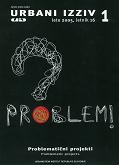Tracing overhead transmission line corridors with regard to environmental and spatial qualities
Tracing overhead transmission line corridors with regard to environmental and spatial qualities
Author(s): Alenka Cof, Franc Jakl, Krešimir Bakić, Ivan MarušičSubject(s): Social Sciences
Published by: Urbanistični inštitut Republike Slovenije
Keywords: corridor; overhead transmission line; planning; Slovenia–Italy; suitability model
Summary/Abstract: The article deals with possibilities for running the proposed overhead transmission line Okroglo-Italian border. The Slovene and Italian methods are shown as methods enabling consideration of environmental and spatial impact within the process of planning overhead transmission line corridors. The Slovene method consists of analyses of attractiveness and vulnerability, whereby the first considers those functional and economic factors that affect spatial attractiveness for overhead transmission lines. Thus we can assess the level of economic and functional suitability of alternative routes of the proposed 400 kilovolt overhead transmission line from transformation station Okroglo (Slovenia) to Srednje, Golo Brdo and Vrtojba, three potential contact points on the Slovene–Italian border. In accordance with stipulations of the Law on spatial management vulnerability models were prepared, which were used to simulate the development’s potential negative environmental effects and to analyse suitability, which implies harmonisation of development and protection demands. Their result is a possible corridor that can be developed without significant conflicts. The Italian procedure was developed to trace the transmission line corridor from the Slovenian border to the transformation station in Udine. It was also applied on the Slovenian side. Three groups of factors were considered in the procedure: exclusion, repulsion, and attraction. The much simpler procedure enables comparisons, since it uses the same or at least similar spatial data. In conclusion a short commentary is added about the corridor concept as a planning tool.
Journal: Urbani izziv
- Issue Year: 16/2005
- Issue No: 1
- Page Range: 161-164
- Page Count: 4
- Language: English

